A perennial plant (Eupatorium) is a member of the Asteraceae or Asteraceae family. Such a plant comes from North America, then it spread throughout Europe, Asia, and it can also be found in the tropical regions of Africa. This genus unites more than 120 species that have been described, and there are still about 200 species with an undefined status. Experts believe that the Russian name for the sapwood was formed from the word "poskon", this is how the male cannabis plant is called. The fact is that these 2 plants are somewhat similar in appearance. The scientific name of the genus was given to him in honor of the Pontic king Mithridates Eupator, who used one of the types of steep as an antidote.
Content
Features of the stethoscope
Sapwood is an annual rhizome or perennial, which is represented by herbaceous plants and dwarf shrubs. Straight shoots are decorated with opposite foliage, which is less often whorled or alternately located. Finger-lobed or pinnate leaf plates have a solid or serrated edge, they are petiolate and sessile, and their shape is oblong, rhombic, ovoid, elliptical, linear or lanceolate-lanceolate. The foliage surface can be rough, smooth, or pubescence is located on it. Baskets are made up of small tubular flowers that can be pink, bluish-lilac, purple or white. Baskets are part of complex panicle, racemose or corymbose inflorescences. The fruit is achene.
Planting a steep tree in open ground
What time to plant
As a rule, the steep is grown from seed using the seedling method. But before you start sowing, the seeds must be cold stratified. To do this, they are combined with moistened sand, the mixture is poured into a glass jar and placed on a refrigerator shelf for vegetables for 30 days.
Sowing is carried out in the first days of March. To begin with, the box is filled with seedling soil mixture, and then stratified seeds are sown into it, which were previously placed in a pinkish solution of potassium permanganate for 24 hours.They need to be buried in the substrate no more than half a centimeter. Then the box is covered with glass (film) and removed to a place where it is always warm. Do not forget to ventilate the crops every day, and also promptly remove condensation from the glass. The first seedlings should appear after 15–20 days, after which the cover must be removed from the container. During the formation of 2 pairs of true leaf plates in the plants, they are subjected to picking into separate peat pots.
Planting seedlings in open soil is carried out in the spring from mid to late May after the threat of return spring frosts is over. If you do not have the time or desire to grow the seedlings of the steep with your own hands, then buy it at a flower shop. Both purchased and your home seedlings must be hardened before transplanting to a garden plot. Hardening procedures are carried out for 10-12 days, at this time the plant is transferred to the street every day. The duration of such a procedure should be increased gradually. To harden seedlings, you must choose a place that has reliable protection from drafts and precipitation.
Open ground planting rules
The best for growing such a flower would be a well-lit and open area. However, in the shade and in a shaded place, it also develops within the normal range. The slope does not make any special demands on the composition of the soil, but it grows best in fertile, loose and neutral soil. On loam and sandy loam soil, such a flower grows worst of all.
The site needs preliminary preparation. To do this, they dig it up, if necessary, introducing compost into the ground (for 1 square meter of the plot from 3 to 5 kilograms). After that, the surface of the site is leveled with a rake and planting holes are made, the distance between which should be from 0.6 to 0.8 m. The hole should have such a depth that the root system of the bush, taken together with the peat pot, can freely fit into it. Place the plant together with the pots in the previously prepared pits and sprinkle them with the required amount of soil. Then the surface of the earth is compacted, and the planted seedlings are watered.


Watch this video on YouTube
Caring for broomstick in the garden
The steep must be looked after in the same way as most horticultural crops. It needs to be timely fed, watered, weeded, cut, loosened the soil surface near the bushes, and also protect them from harmful insects and diseases. Since the steep is a rather vigorous plant, it may need a garter to a support, instead it can be planted near a wall or fence. It is not necessary to cut off such a plant in order to form a bush, however, it is recommended to remove the inflorescences that have begun to fade in a timely manner so that the ripe seeds do not fall on the surface of the soil, and self-seeding does not occur.
Such a flower is distinguished by a very high resistance to frost, therefore, in winter, it can do without shelter. However, in late autumn, it is recommended to cut off the ground part of the bushes.
Watering and feeding
This culture is distinguished by its moisture-loving nature, in this regard, if there is such an opportunity, then select a site for planting it located near a reservoir. Watering should be abundant and frequent, while it should be borne in mind that a small stagnation of liquid in the soil is not terrible for the plant. However, it suffers greatly during prolonged drought. When the flowers are watered or it rains, it is imperative to loosen the surface of the soil around them, this will not allow a dense crust to form on its surface. Pull out all weeds while loosening. In order to significantly reduce the number of weeding and watering, it is recommended to cover the surface of the site with a layer of mulch (organic matter).
During one season, such a plant must be fed at least 3 times: in spring, in June and during budding.To do this, you need to apply a complex mineral fertilizer to the soil; instead, you can use a solution of mullein or bird droppings in a weak concentration.
Diseases and pests
This culture is very resistant to diseases and harmful insects. However, the steep can suffer from miner, it is very difficult to get rid of them even with the help of the most powerful insecticidal drug. Before processing in the affected bush, it is necessary to cut off all aerial parts that are damaged by this pest. If it is possible to get rid of such a harmful insect, then the bush will recover rather quickly.
Types and varieties of stethoscope with photos and descriptions
Cannabis steak (Eupatorium cannabinus)
In nature, this species is found almost throughout Europe, while it prefers to grow in streams, swamps and wet meadows. The height of its erect stem can vary from 0.2 to 1 meter. Short-petiolate, slightly pubescent leaf plates serrate along the edge have a finger-split shape, while they include from 3 to 5 segments. Pink baskets are collected in apical corymbose-paniculate inflorescences. The most popular are the following decorative forms:
- Plenum (Flore Pleno)... The height of the bush is about 1.6 m. During long flowering, the plant is decorated with double baskets.
- Variegatum... The height of the bushes is about 0.75 m. Along the edge of the foliage there is an uneven edging of white, and the bush is also decorated with rich pink flowers.
- Album... The color of the inflorescences is white.
Bone sap (Eupatorium rugosa)
Unlike other species, such a steep sill has opposite oval-shaped leaf plates, as well as a serrated edge. The color of the inflorescences is white. The best varieties of this type are:
- Chocolet... This variety is highly resistant to frost. Glossy leaf plates of a bronze-brown hue have a purple tint during opening. The inflorescences include small white flowers.
- Braunlaub... The plant is about 150 cm tall. The buds and young foliage are brown in color.
Purple stethosis (Eupatorium purpureum)
The homeland of such a rhizome perennial plant is North America, it reaches a height of up to one and a half meters. Straight shoots are colored greenish-blue. Whorled hairy leaf plates, which have an oval-lanceolate shape, sharpen to the apex, their edge is serrated. Shield-shaped inflorescences, reaching 0.2 m in diameter, consist of small baskets, the color of which can vary from lilac-purple to pinkish. The best varieties of this type:
- Little Red... The height of compact bushes is about 100 cm, they are decorated with wine-pink inflorescences.
- Little Joe... On the bushes one meter high, inflorescences grow, consisting of small flowers of a smoky pink hue.
Bone sap (Eupatorium maculatum)
Such a North American plant in nature prefers to grow in forests, thickets and in the meadows of the coastal zone. The height of a powerful bush is about 1.8 m, whorled leaf plates have an elongated shape. The color of the inflorescences is lilac. The following varieties are most popular with gardeners:
- Album... The two-meter bush is decorated with white inflorescences with a grayish tint.
- Atropurpureum... The stems are dark red in height up to 2 m. The color of the flowers is violet-pink.
- Barterd Bride... Snow-white inflorescences adorn the plant, reaching a height of up to 240 cm.
- Gateway... The height of the red stems is about 150 cm. The dense dome-shaped inflorescences include mauve flowers.
- Big Umbrellaz... The height of the bush is about 1.8 m. Large caps are formed on red stems, consisting of pinkish-gray inflorescences.
- Karin... Two-meter bushes are decorated with light lavender inflorescences.
- Phantom... In such a hybrid, dark stems reach less than a meter in height. The color of the flowers is gray-lilac.
- Pearl Bash... The stems of one and a half meter bushes are dark red. The mauve inflorescences are similar in appearance to the Gateway variety, but they are smaller in size.
Skeleton in landscape design
Bristlecone can be cultivated as a single plant, and it is also used as a background for other horticultural crops. This plant looks great in the background of a mixborder or in the middle of a green lawn. It is often used to decorate artificial or natural reservoirs. The slope planted by the group is able to disguise an unsightly structure or fence. Vigorous varieties, covered with frost or snow, can become a wonderful decoration of the garden in the cold season. Such a culture can also be used for cutting, its inflorescences retain their fresh appearance for a long time. The inflorescences and stems of the birch tree are also suitable for ikebana. It is recommended to plant it together with daylily, buzulnik, loosestrife, astilba or echinacea.
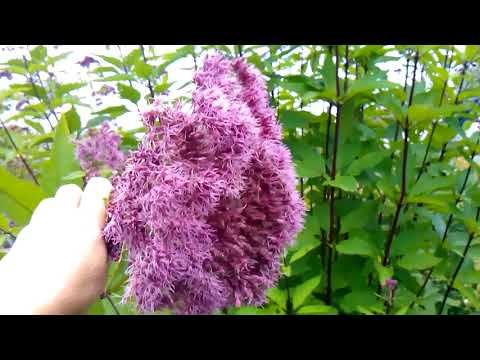

Watch this video on YouTube

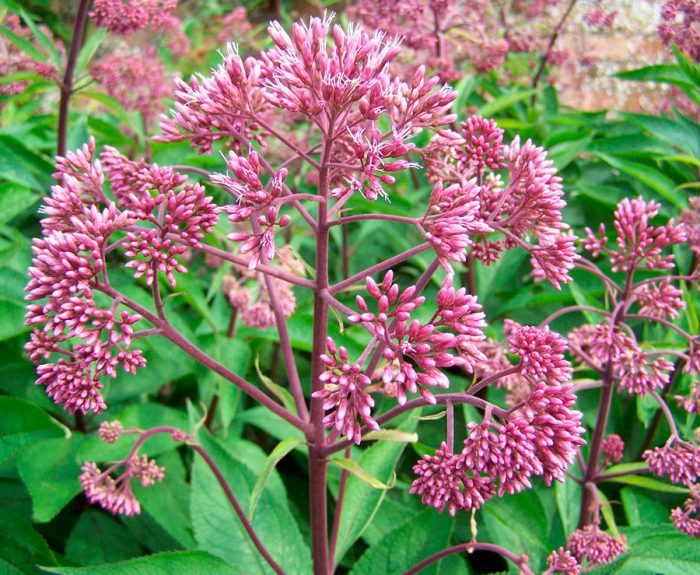
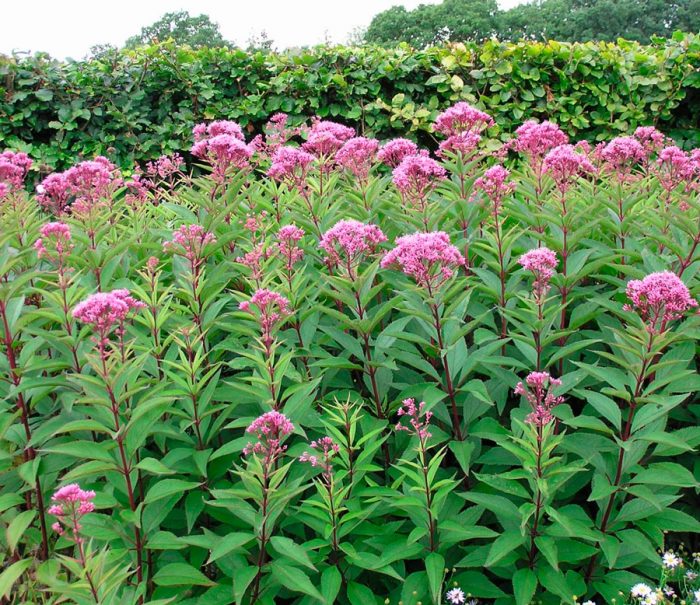
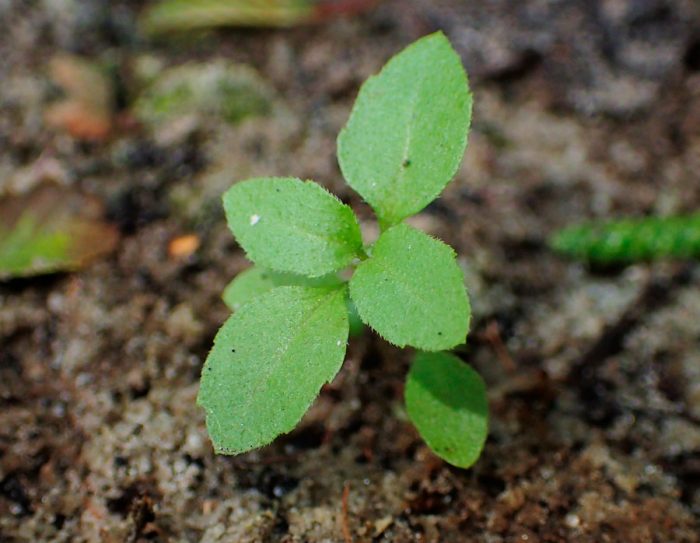

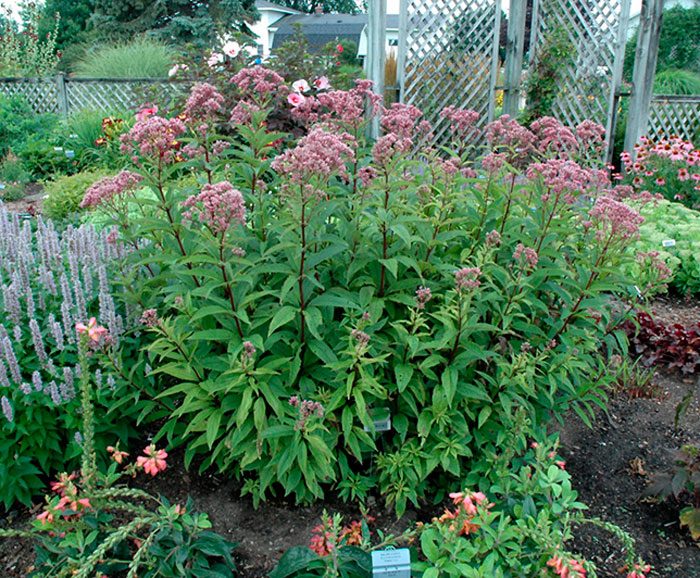
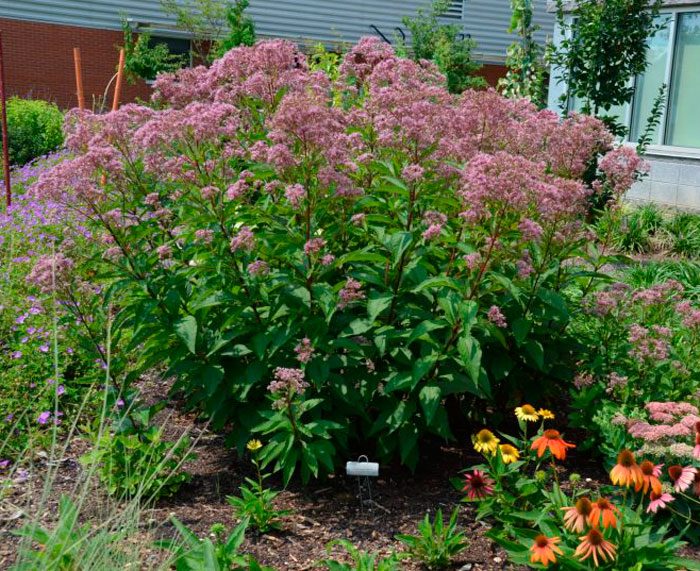
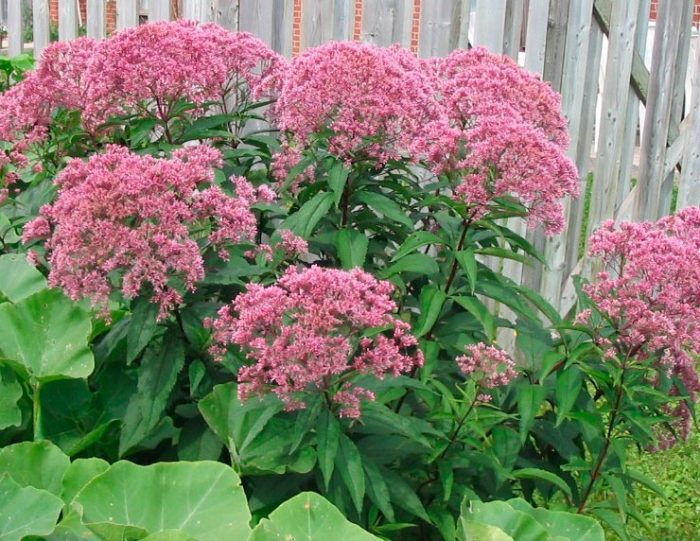
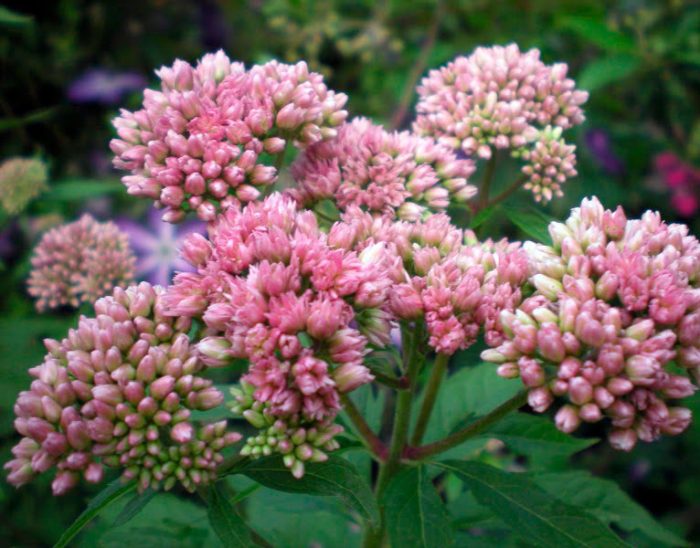
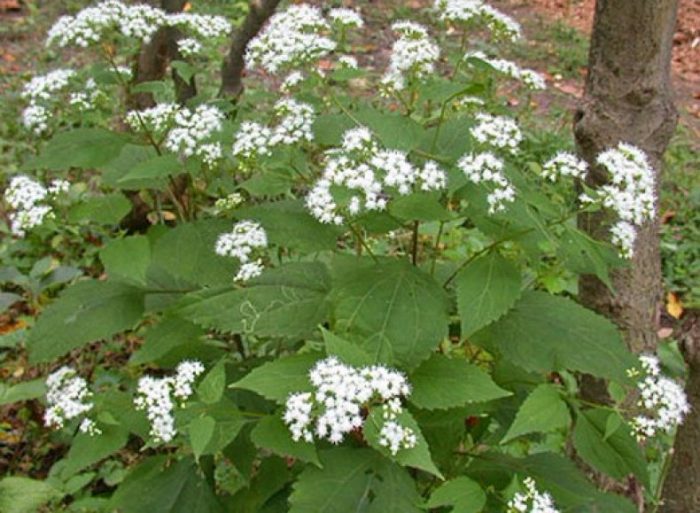
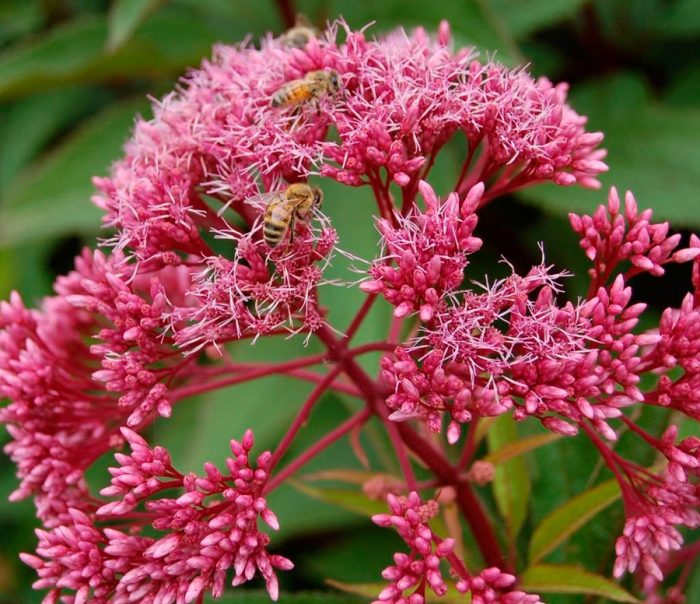
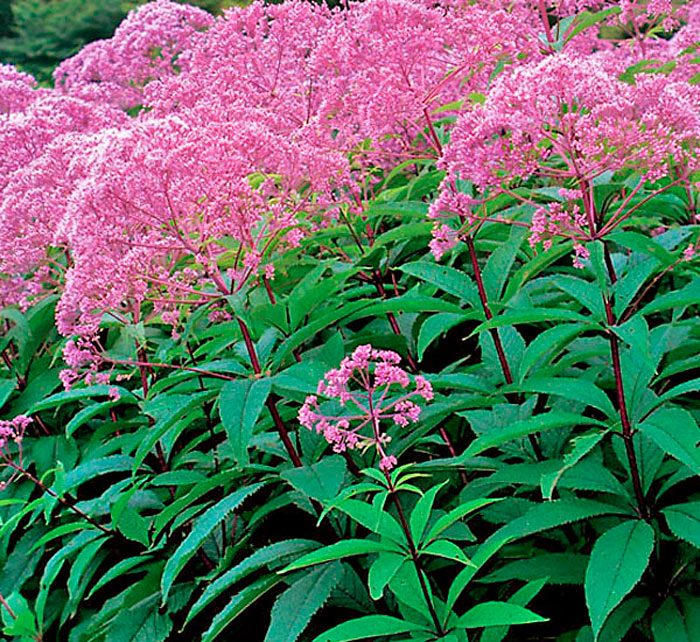
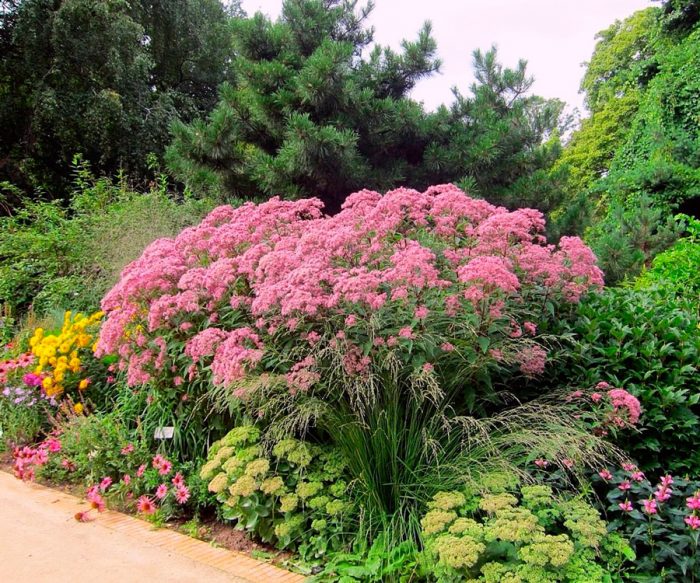


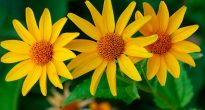
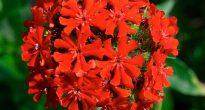



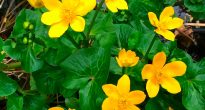


Hello dear author (sorry, I do not know how to address). I really liked the article and video about the bastard. Particularly interesting information about the varieties of spotted grass, such as "Atropurpureum" and "Barterd Bride". My site is waterlogged and tall plants are required to cover unwanted species.
I will be very grateful to you if you indicate the addresses of nurseries or florists who have seeds of these plants.
Hello, we do not sell seeds